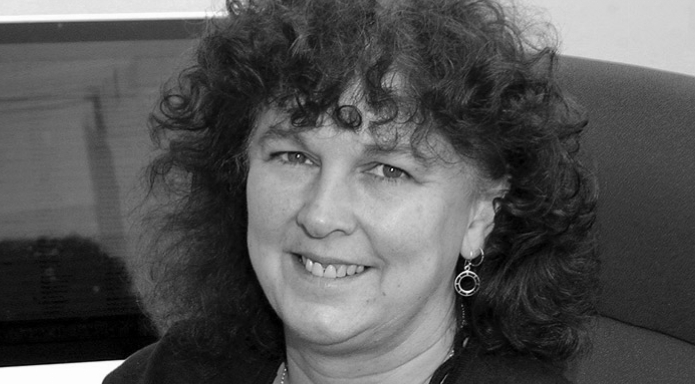IT Hero: Mark Evans, Head of IT, RLB

“I couldn’t see a reason why we needed on-premise servers, and still can’t – they take up a lot of real estate and don’t cover the rents on that space. That’s why we’re taking the bold move to become one of the first zero-infrastructure companies in the construction industry,” Mark Evans, Head of IT, Rider Levett Bucknall (RLB).
Following a series of high profile IT jobs, and a vision to implement the first ever zero-infrastructure model at a UK based construction company, Mark Evans was voted one of CIO Magazine’s Top 100 UK CIOs in 2016.
With phase one of the model now complete, and as plans to roll out the model across the UK arm of the business come to fruition, we caught up with Mark to find out how the cloud has transformed RLB’s overseas offices and the tips he has for other construction companies.
How did your journey to the cloud begin?
It all started, as cloud migration commonly does, with moving into a private cloud environment about seven years ago in order to achieve cost savings, and still retain control. Then, as we became more mature and technologically advanced, it made sense to transition off-premise. So, we moved all of our services into the cloud and took on Microsoft 365 licensing.
Technology is moving so quickly that we’ve already outgrown our existing document management system and are looking to get involved with Dropbox Business, Basecamp and Slack in the future. Technology doesn’t stand still and we’re learning that the move towards zero-infrastructure isn’t a static process, it’s one that’s constantly evolving.
What is the zero-infrastructure model at RLB and how does it work?
When you have employees and contractors split across eleven sites in the UK, several in the Caribbean and sites in Saudi Arabia, a zero-infrastructure model doesn’t happen overnight – we are phasing the roll out.
We’re engaging with a number of ERP providers in the Caribbean and Saudi where our businesses are 100% cloud. We are using these offices as the test bed for the full zero-infrastructure model because they currently don’t use servers.
From a business perspective it’s a win, win; it gives us the opportunity to test the strategy and develop credibility for the idea, without making a huge technology investment that impacts the business. So far we are seeing some great results and already plan to extend the model to the UK.
Why did/have you decided to transition to a zero-infrastructure model?
This model was driven by our business strategy: to improve the working experience for our staff whilst boosting the bottom line.
Vendor relationships allow us to create a ‘pick and mix’ style approach to IT that gives our staff access to the most appropriate tools to do their job and serve the client. What IT managers need to realise is that the one size fits all approach to IT no longer works in today’s consumer driven technology market.
From a financial perspective the cost of maintaining our own data centre was also inhibiting its success. With this new model, we’re utilising the best of breed services and are in a position where an off premise system means we can rubber stamp legislation around best practises for backing up content.
The beauty of subscription based services is they also provide a known cost – so we have certainty on budget, month by month. As we move towards a 100% virtual environment, we’ll be able to check costs per employee and make decisions – based on usage data – about where efficiencies can be made.
What have been the main benefits of moving to the cloud?
We have already seen a number of benefits for employees, clients and for the business. Employees have greater flexibility – as long as they’re connected to the internet they have access to all core services and the simple user interface means the training requirement has been minimal across the business. This is not always the case when investing in new tools!
From an IT (and board level) point of view we have also been given peace of mind, the business continuity side of migrating to cloud is an additional bonus that is perhaps underestimated. Shortly after we migrated to the cloud for example, we had an office flood: not only did all our employees work from home with no trouble, but we didn’t lose any data.
A move towards a zero-infrastructure model is forward thinking in the construction industry – why are others companies not doing it?
We’ve achieved this where others haven’t because we’ve got a very open minded senior management team. The way the business has been structured in terms of operation gives us a very short window – we lease all our kit on a three-year cycle which means we have up to date hardware, so our software needs to be equally sophisticated.
Technology is a wonderful thing but it doesn’t mean anything if the board don’t buy in – luckily our board have an appetite to deliver value to both the business and the client.
In businesses where there are less open-minded management teams, what advice do you have for IT decision makers wanting to make change?
It all comes down to making IT a business decision. My advice is not to get too involved with technology – within IT, people get wowed by technology but this obsession doesn’t transfer well outside of the department and into the wider business. IT is not a technological challenge – it’s a business proposition when done right!
As such you should involve the CFO or budget holder right from the off-set. In our case I shared two emails with our CFO right at the beginning of the project: the new invoice for the cloud model, and an old invoice from the on-premise model. Once we’d demonstrated the cost saving in black and white, he was on-board and the implementation was much smoother as a result.




